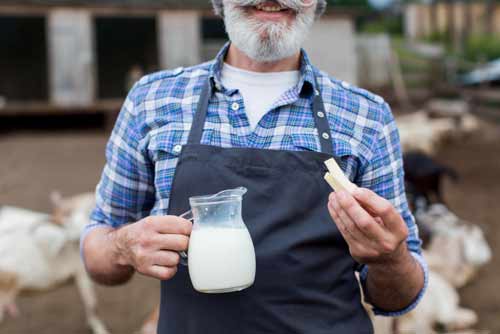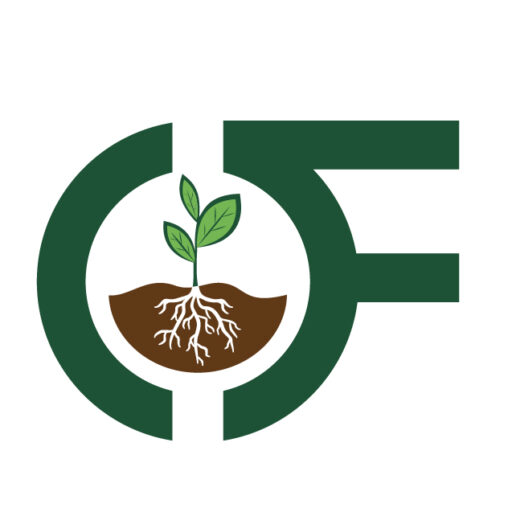How Hay Quality Impacts Milk Production in Dairy Cows
The quality of hay fed to dairy cows plays a critical role in their health, well-being, and milk production. As a dairy farmer, understanding how hay quality influences milk yield is vital for maintaining a productive and profitable operation. The connection between hay quality and milk production, offering insights into best practices for selecting and using hay to optimize your dairy herd’s performance.

(Man with bottle of goats milk close-up.)
The Importance of High-Quality Hay for Dairy Cows
Dairy cows require a balanced diet rich in nutrients to produce high-quality milk consistently. Hay is a crucial component of their diet, providing essential fiber, energy, and nutrients that support digestion and overall health. The quality of hay directly affects a cow’s ability to digest and absorb these nutrients, which in turn impacts milk production.
Key Nutrients in High-Quality Hay
High-quality hay should contain the right balance of proteins, carbohydrates, vitamins, and minerals. Here are some of the key nutrients that contribute to milk production:
- Crude Protein: Essential for growth, reproduction, and milk synthesis. Hay with a higher protein content, such as alfalfa, is particularly beneficial for lactating cows.
- Fiber: Important for maintaining rumen function and promoting healthy digestion. Adequate fiber ensures that cows can efficiently convert feed into milk.
- Energy: The energy content of hay, usually derived from carbohydrates, provides the fuel cows need for daily activities and milk production.
The Impact of Hay Quality on Milk Yield
The quality of hay can significantly influence both the quantity and quality of milk produced by dairy cows. Poor-quality hay, which may be low in nutrients or contaminated with mold or dust, can lead to health issues, reduced feed intake, and consequently, lower milk yields.
1. Nutrient Deficiencies and Milk Production
When dairy cows consume hay that lacks essential nutrients, their overall health and milk production can suffer. For example, a deficiency in crude protein can lead to decreased milk yield and lower milk protein content. Similarly, insufficient fiber can cause digestive issues, reducing the cow’s ability to produce milk efficiently.
2. Digestibility and Milk Output
The digestibility of hay is a critical factor in determining how well cows can utilize the nutrients it contains. High-quality hay with optimal fiber content is more easily digested, allowing cows to absorb the nutrients they need for milk production. In contrast, low-quality hay with poor digestibility can lead to reduced feed efficiency and lower milk output.
3. Health and Longevity of Dairy Cows
Feeding high-quality hay not only supports milk production but also promotes the overall health and longevity of dairy cows. Healthy cows are more likely to have consistent lactation cycles, produce higher volumes of milk, and have longer productive lifespans. Investing in quality hay can lead to significant long-term benefits for dairy operations.
Best Practices for Selecting High-Quality Hay
To ensure that your dairy cows receive the best possible nutrition, it’s essential to select high-quality hay that meets their specific needs. Here are some best practices to follow:
1. Understand Your Herd’s Nutritional Requirements
Different stages of lactation require different nutritional profiles. For instance, cows in early lactation may benefit from hay with higher protein content, while those in later stages may need hay with more energy. Understanding the specific needs of your herd will help you choose the right type of hay.
2. Test Hay for Nutrient Content
Before purchasing hay, it’s advisable to have it tested for nutrient content. This will give you a clear understanding of its protein, fiber, and energy levels, allowing you to make informed decisions about supplementation and overall diet management.
3. Inspect Hay for Quality Indicators
Physical inspection of hay can also provide valuable insights into its quality. Look for hay that is green, leafy, and free from mold, dust, and foreign materials. The smell should be fresh and sweet, indicating that the hay has been properly cured and stored.
4. Consider the Source
Local hay suppliers, such as those in the Pasco and Tri-Cities communities, often provide hay that is better suited to the specific environmental conditions of your region. Building a relationship with a reliable local supplier can ensure a consistent supply of high-quality hay for your dairy herd.
The Role of Hay in Milk Bath Products and Miniature Cow Milk Production
Beyond traditional dairy operations, high-quality hay also plays a role in niche markets such as milk bath products and miniature cow milk production. These specialty products require milk with specific qualities, which can be influenced by the cow’s diet.
1. Milk Bath Products
Milk baths have become popular for their skin-soothing properties, often requiring milk that is rich in nutrients and fats. Feeding dairy cows high-quality hay can enhance the nutrient content of their milk, making it ideal for use in luxury milk bath products.
2. Miniature Cow Milk Production
Miniature cows, prized for their smaller size and unique characteristics, also require a diet of high-quality hay to produce milk that meets market standards. The same principles of hay quality apply, ensuring that even small-scale dairy operations can achieve optimal milk production.
Sustainable Practices in Hay Production
As a dairy farmer, choosing high-quality hay not only benefits your herd but also supports sustainable agricultural practices. By working with local hay suppliers who prioritize sustainability, you can contribute to the health of your community and the environment.
1. Supporting Local Hay Suppliers
Local hay suppliers in the Pasco and Tri-Cities communities often implement sustainable farming practices, such as crop rotation and reduced chemical use. By purchasing hay from these suppliers, you support their efforts to maintain soil health, conserve water, and reduce the environmental impact of hay production.
2. Reducing Waste and Maximizing Efficiency
Using high-quality hay efficiently can help reduce waste and lower feed costs. Proper storage and feeding practices ensure that hay retains its nutritional value and is consumed entirely by your cows, minimizing losses and maximizing milk production.
Conclusion: Investing in Quality Hay for Better Milk Production
The quality of hay you feed your dairy cows directly impacts their health, milk yield, and overall productivity. By selecting high-quality hay that meets your herd’s nutritional needs, you can ensure consistent and profitable milk production. Additionally, supporting local hay suppliers who prioritize sustainable practices benefits both your operation and the broader community. At Ohana Farms, we are committed to providing the best hay products to help you achieve success in your dairy farming endeavors.

